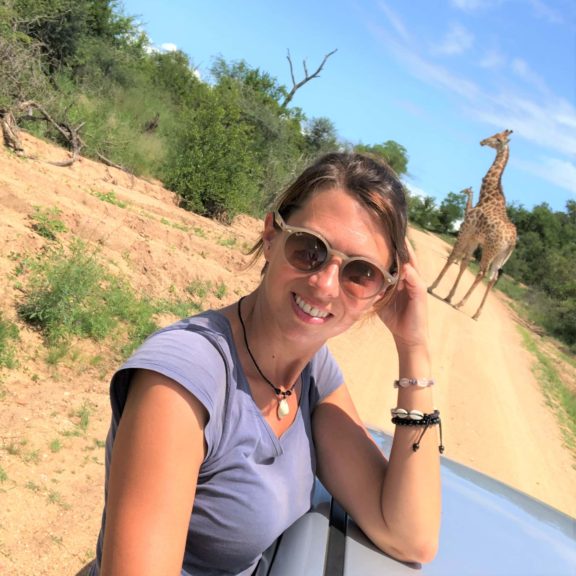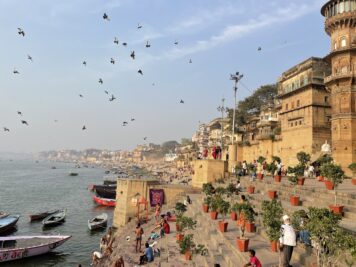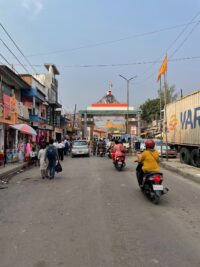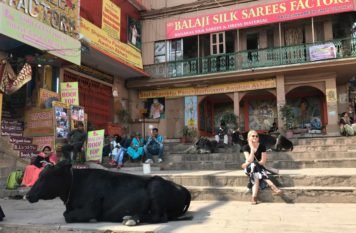This post is based on our experience crossing the border from Sonauli (India) to Belahiya (Nepal) in April 2024.
We wanted to cross the Panitanki border (near Darjeeling, West Bengal), to the eastern part of Nepal. However, an Indian Immigration Officer informed us that foreigners can only exit India and travel to (and I assume enter from) Nepal by road at the Sonauli (Uttar Pradesh) and Raxaul (Bihar) border crossings. This seemed to stack up with our research, although we couldn’t find a lot of information about it. This is also the kind of thing that can change (and has) at any time, so you never know…
The Sonauli border crossing is straightforward and easy. There are plenty of nice places to explore on the way to Kathmandu like Lumbini, Tansen, and Pokhara – so you don’t have to go straight through to the capital unless you want to (I mean, unless you want to ride a bus forever in one go).
So, if you ever wondered how to cross the Sonauli border between India and Nepal by road, then read on.
Before you go
If you’re crossing the border from the Nepalese side and this is the first time you’re entering India (i.e. you started your trip in Nepal) – then you need the sticker visa for India in your passport, as you can’t activate an Indian e-visa entering by road the first time. If you’re entering India the first time (this trip) with an e-visa, you need to fly.
Or, if you’ve already activated your India e-visa and you’re planning to return there after your time in Nepal, then you obviously need dual/multiple entries for India.
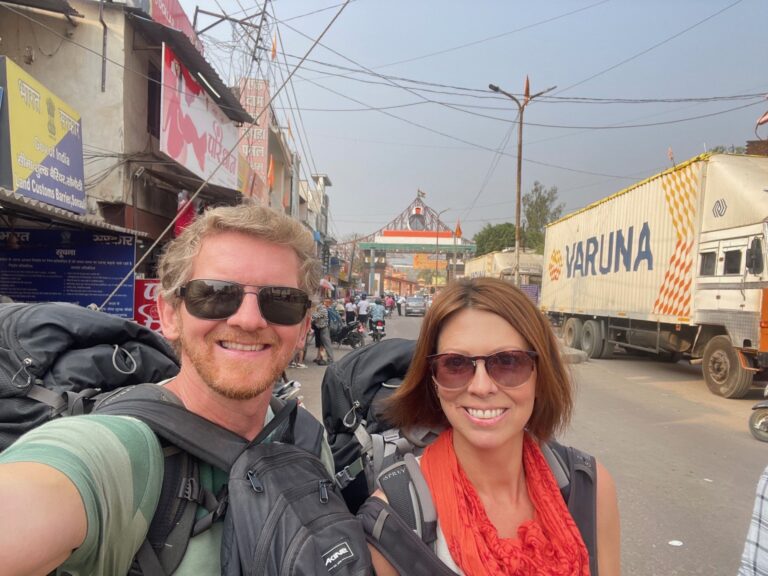
Most countries are eligible for a Nepalese visa on arrival. Do check that your country is eligible to be on the safe side. A fifteen-day visa cost 30 USD, a thirty-day visa cost 50 USD, and a ninety-day visa cost 125 USD.
There are money-changers on both sides of the border. We also saw ATMs on both sides.
The border is open during regular daytime hours. As with any other border-crossing day, just get an early start.
The route
The closest train station to Sonauli is in Gorakhpur. We arrived there from Varanasi and stayed a night. From Gorakhpur you can take a bus to Sonauli, stamp out on the Indian side, and then walk or take a cycle rickshaw to the border. You go through a very casual Indian customs and enter Nepal by walking through a big gate. Once on the Nepalese side, it’s a bit of a walk to the Immigration office.
After the immigration formalities you can take a rickshaw to Bhairahawa, from where you can get onward transport to Lumbini, or to Tansen/Pokhara via Butwal.
Gorakhpur to Sonauli
Public busses run from Gorakhpur bus stand straight to Sonauli. They take around three hours and cost about 150 rupees. We tried to book a bus on Redbus but for some reason it wasn’t possible. Not sure if that was the app or that there are actually no private busses running that route. But just showing up and getting the next bus was painless.
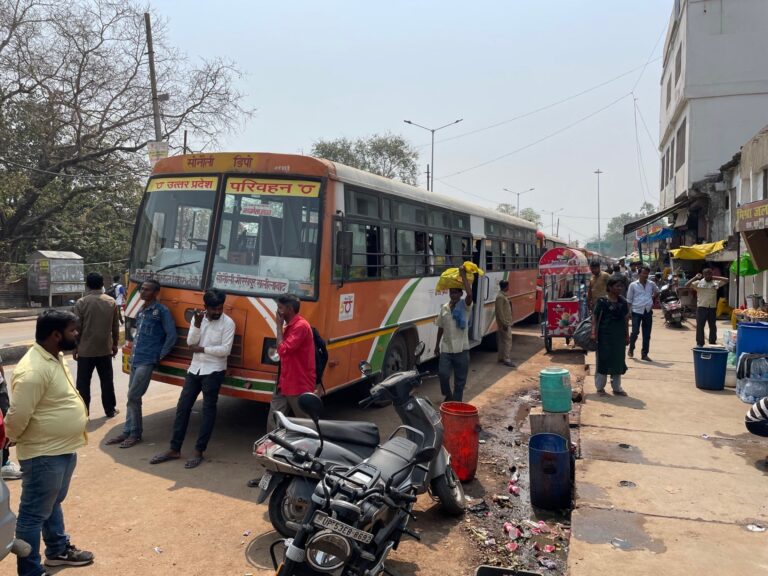
Both share taxi and private taxi drivers approached us around the busses as well, so if you’re in a hurry there is no shortage of options. The share taxis quoted 400 rupees per person and told us it would take two hours to Sonauli.
In Sonauli we changed our leftover Indian rupees to Nepalese rupees. We also had one last Indian dinner (we thought it would be harder to find Indian food in Nepal but we were wrong. There are plenty of dhabas).
Crossing the border
Indian Immigration is right next to the bus station in Sonauli, just six hundred meters from the border. It’s well signed and the cycle rickshaw drivers will for sure let you know where it is. The office is open from 06:00 till 22:00. There were no queues when we arrived. We are running out of passport pages so we asked them to stamp on top of our visa since it was about to expire the next day anyway, and they did.
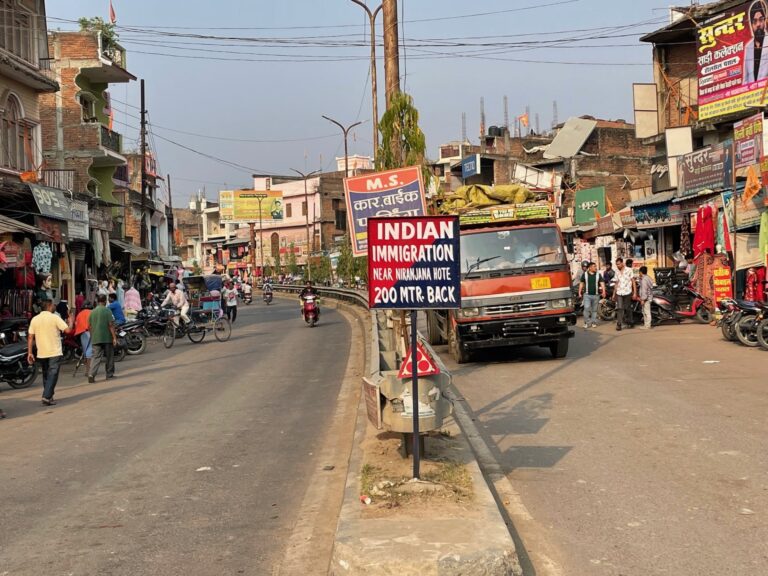
From Immigration it’s about six hundred meters up the road to the actual border and go through India’s big gate. Indian customs officials will take down your details. They didn’t go through our luggage but a dog kind of sniffed our backpacks.
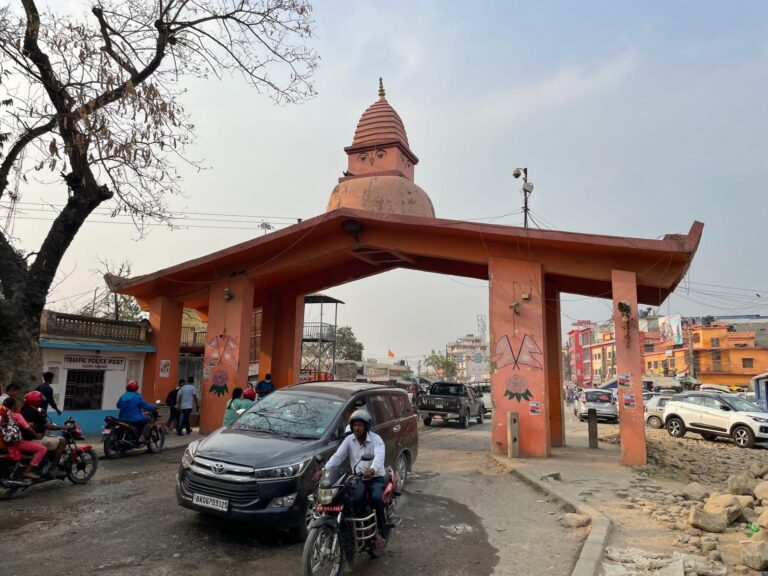
Immediately before the Nepalese gate, you go into the tourist police office on your right. The officer there will take down your details and tell you to go to the Namaste hotel, which is where Immigration is. It’s another walk, a bit farther into Nepal than we expected. We walked straight there, past Nepal Customs – nobody told us to go there so we just kept on walking to Immigration. Everyone knows where it is and will keep pointing the way – if you think you’ve gone too far, you probably haven’t.
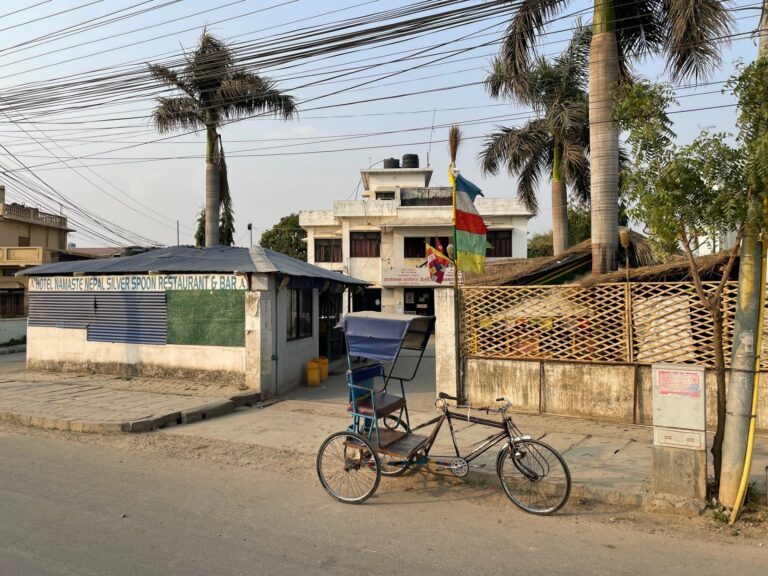
The Immigration office is on your right hand side, and oddly enough does seem to be affiliated with the Namaste hotel and bar. Scan the QR code outside the office and fill out the online form. They have WiFi if you don’t have a SIM (they also sell SIMs nearby). Your filled out visa application comes by email as a PDF.
Just to the left of the office, you show the PDF on your phone at the small bank window and pay for your stay with mint USD bills. Then, you go back to the main office for your visa sticker. Individual travelers and small groups are given priority. Don’t join the queue for large bus tour groups, of which there seemed to be many when we were there.
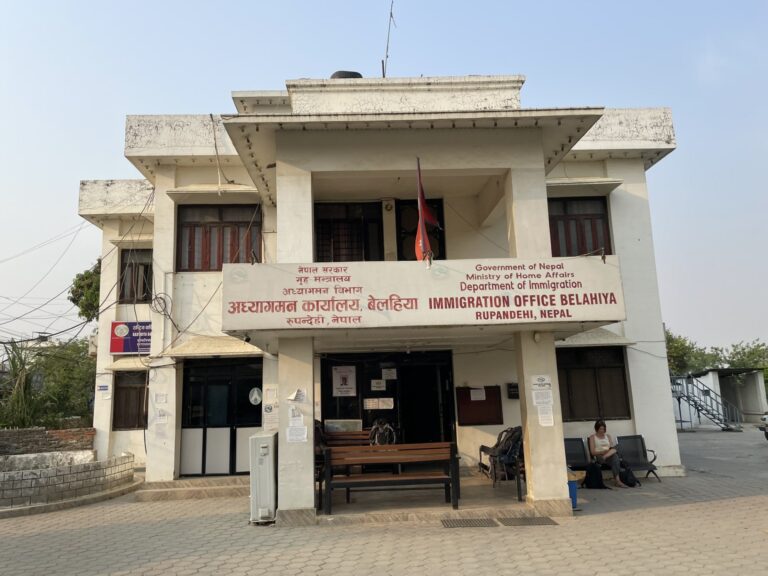
It’s an easy border. Namaste, Nepal!
Bhairahawa to Lumbini or Tansen
You can pick up a rickshaw to Bhairahawa right outside the Immigration office. Bhairahawa is your main stop for onward transport, unless you want to spend the night in a dusty border town. It’s about a fifteen minute drive and cost around 100 rupees per person.
Tell the driver to drop you off at the bus stop for either Lumbini or Butwal. We took the local bus to Lumbini (the birthplace of the Buddha) and stayed there for the night. That took another forty-five minutes and cost around 80 rupees each.
Alternatively, you can take a local bus to Butwal, and from there connect to Tansen or Pokhara.
Read More
For more of our adventures (and misadventures) as we travel from Cameroon to Japan, check out the rest of my stories from the road.
Or have a look at these stories from our previous visits to India.
